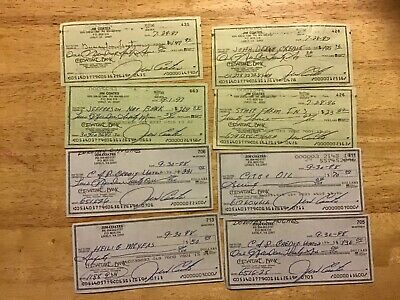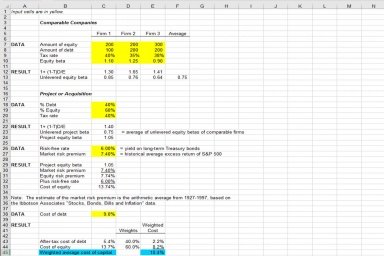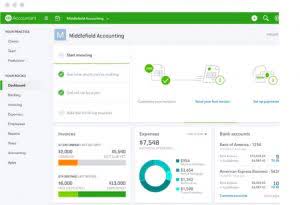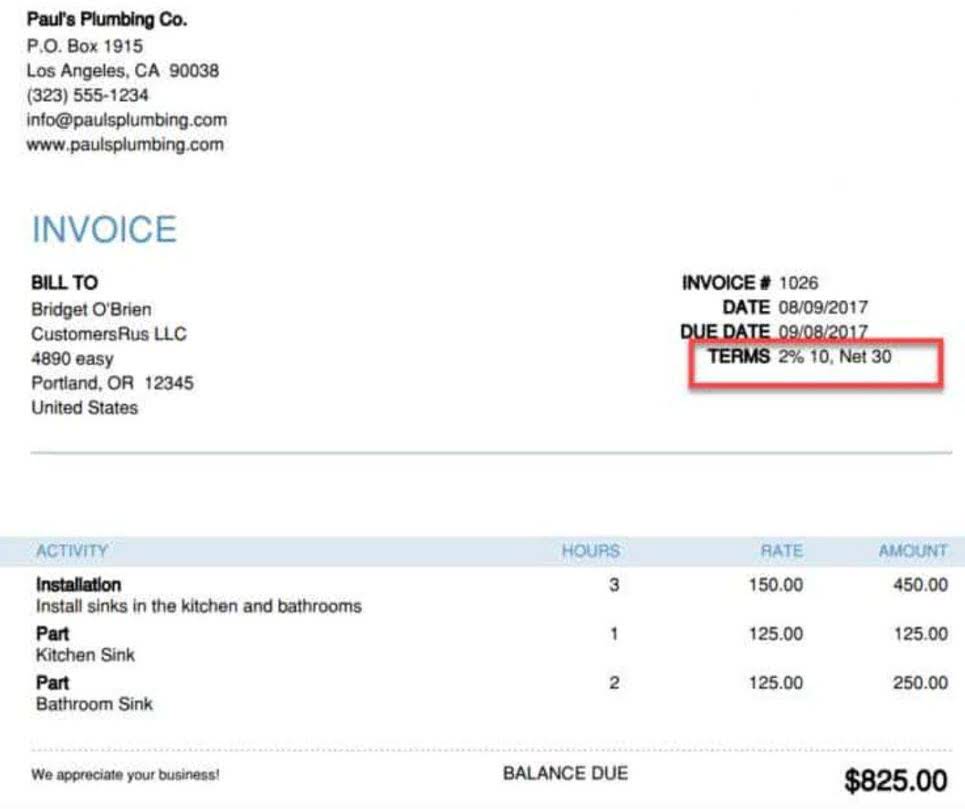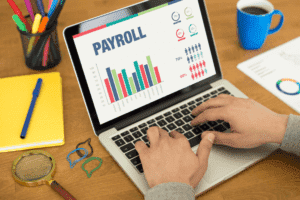In other words, you use it to record expenditures and payments that will be due in the future. DateAccountDebitCreditXX/XX/XXXXSupplies100Accounts Payable100You pay off the $100 debt with cash. Now, make another journal entry showing a decrease in your AP account and your Cash account. And, credit a cash-related account to reflect your decrease in money from making the payment (e.g., Cash or Checking account).
If one vendor provides you a net-15 agreement and another gives you net-30, take the time as an advantage to pay off both on time. Here’s a quick list of 10 Accounts Payable Best Practices for small and medium sized businesses, along with some insights into how these best practices can keep your business on track. Once all the goods and services have been provided, the invoice must be sent immediately. Multi-currency wallets on Volopay let you maintain separate wallets on the platform with a currency of your choice from the ones that are available.
Importance Of Ar And Ap
Although AP is largely a numbers-oriented job, it also requires solid communication skills. The best AP professionals are skilled in both managing numbers and managing a number of human relationships, both inside and outside your organization. They not only deal with the primary approvers in different departments, but also other people who contribute critical information to the process, and manage important vendor relationships. As organizations continue to digitalize, organizations are staring at high-quality, real-time data. Now, real-time financial transactions can be used to optimize AI-driven financial and operational business models and are also expected to dramatically increase as the complexity of business increases. Use AI-enabled 2-way/3-way match feature of Aavenir Invoiceflow to detect anomalies during payment approvals or financial closing periods .
Minute details like a vendor’s name, invoice date, due date, item description, quantity, amount, tax code, are all automatically scanned and synced to your accounting tool. Due to the high volume of payable and receivable transactions, payables and receivables get their own ledgers, called subledgers. Doing so makes recording and tracking these transactions much easier among the people you buy from and sell to. In most modern accounting systems, subledgers are seamlessly integrated into the General Ledger. Accounts payable and receivable ensure there are enough funds coming into the business to pay your bills and hopefully have cash left over.
This was followed by similar software that could help companies computerize their accounting. The Accounts Payable Process is the management and execution of the company’s short-term payment obligations to vendors/suppliers. The full cycle of the accounts payable process includes capturing invoice data, GL coding, a 3 way match, flagging errors and approving payments.
Learn How Netsuite Can Streamline Your Business
Receivables represent funds owed to the firm for services rendered and are booked as an asset. Accounts payable, on the other hand, represent funds that the firm owes to others. For example, if a restaurant owes money to a food or beverage company, those items are part of the inventory, and thus part of its trade payables. Meanwhile, obligations to other companies, such as the company that cleans the restaurant’s staff uniforms, fall into the accounts payable category. Both of these categories fall under the broader accounts payable category, and many companies combine both under the term accounts payable. The sum of all outstanding amounts owed to vendors is shown as the accounts payable balance on the company’s balance sheet. “Accounts payable” refers to an account within the general ledger that represents a company’s obligation to pay off a short-term debt to its creditors or suppliers.
Harold Averkamp has worked as a university accounting instructor, accountant, and consultant How Accountants Handle Accounts Payable and Payment Transactions for more than 25 years. He is the sole author of all the materials on AccountingCoach.com.
Comments: Accounts Payable Vs Accounts Receivable
We now offer 10 Certificates of Achievement for Introductory Accounting and Bookkeeping. When the duties are separated, it will require more than one dishonest person to steal from the company.
Purchase orders help a business control spending and keep management in the loop of outgoing cash. Cash position is important because every firm needs a minimum cash balance to operate. Owners must consider the timing of cash inflows from accounts receivable and the cash outflows required for accounts payable. Save money without sacrificing features you need for your business. If you can’t make a payment on time, talk with your vendor to negotiate payment terms. You might be able to go on a payment plan where you pay the money owed in installments.
The Accounts Payable Process
Once the company pays it off, it will debit it to decrease the credit balance. Before immediately making a payment, the accounts payable team needs to review it. Doing so ensures that the invoicing source is a legitimate vendor and that all details are correct. It’s best to be careful, as some transactions involve significant amounts of money. Most businesses adhere to the double accounting process for their general ledgers. By doing so, every transaction needs to have an offsetting debit and credit.
- Invoices generally require payments within 30, 60, or 90 days.
- Hence, accounting entry is done concerning business purposes and relates to specific cost centers.
- AP often involves getting the invoice to the right party for authorization.
- Accounts receivable are funds the company expects to receive from customers and partners.
- Every invoice is routed through the approvals process, and all data in transit is encrypted using industry-standard Transport Layer Security .
This invoice discounting system not only saves your money but also maintains a positive business relationship with your vendors. Vendor management system like Volopay to keep track of vendors, all their invoices, and ensure timely payment processing for each one of them. These are amounts owed to you by your customers or clients for products/services they buy on credit. The goal is always to pay vendors as late as possible and on the best terms. Depending on your relationship with the supplier and your track record paying, you can get a vendor discount if you pay early or upfront. This is the same as an accounts receivable discount, but instead of collecting money, you are paying it out. Discounts may also be available if you buy in bulk or on a consistent basis.
How Ap Automation Software Improves Ap Department Efficiency
With the long-term goal of serving your customer and building their trust, you can make the decision of choosing vendors that meet your standards even if they cost slightly higher. In some cases — such as with expensive equipment purchases from vendors — you may record a note payable instead of an account payable. After the receiving report and purchase order information are reconciled, they need to be compared to the vendor invoice. Hence, the receiving report is the second of the three documents in the three-way match . Accounts receivables are analyzed by the average number of days to collect payment , and accounts payable are analyzed by the average number of days it takes to pay an invoice . Invoices are records of transactions between a buyer and a vendor.
“Forgetting information and tasks is a very common human tendency. By setting up reminders one can easily take care of bills and take steps towards accounts payable process improvement.” Getting these details right will help ensure the accuracy and integrity of your accounts payable process. When it comes to accounts payable, the most important thing is to pay only company invoices that are legitimate and accurate. Put simply, accounts payable consists of everything your business owes to creditors. This can run the full spectrum of debts, from freelancers billing by the month through to car leasing agencies invoicing for your work fleet. When accounts payable items are paid, the accounts payable account is debited, with cash credited.
- From a leadership perspective, these two functions need to remain strictly separate, in the hands of different departments or personnel.
- Analyzing your accounts receivable involves calculating your Days Sales Outstanding ratio, or DSO.
- However, in double-entry accounting, an increase in accounts payable is always recorded as a credit.
- With the amount of money at risk in accounts payable, it’s important to get this right from the first step.
- Furthermore, the accounts payable balance is reflected in the balance sheet, specifically in the current liabilities section, and includes all invoices that are due to be paid.
Other payments that may need special verification include monthly payments such as lease agreements and contracts to ensure all payments rendered are legitimate and accurate. The accounts payable process is only one part of what is known as P2P (procure-to-pay). P2P covers the cycle from procurement and invoice processing to vendor payments. AP automation streamlines these steps and ensures a higher level of accuracy throughout every step of the workflow. Each responsibility of the accounts payable team helps to improve the payment process and ensure payments are only made on legitimate and accurate bills and invoices. A knowledgeable and well-managed accounts payable department can save your organization considerable amounts of time and money with regard to the AP process. The AP department members are entrusted with the responsibility to process expense reports and invoices, along with this they also have to ensure that all the payments are accurately made.
Decrease The Accounts Payable Aging Schedule
With virtual meeting rooms, we might even catch up on our sleep. Though vitally important in our lives, Finance terms are not given much thought. In financial aspects, General Ledger is the backbone of an organization’s accounts payable system. Interestingly, most financial frauds in organizations can be detected with an analysis of General Ledger in organizations. Let us dive in and understand why “General Ledger” is so critical to an organization. To help prevent business fraud from within your organization, it’s important that you establish separation of duties and internal controls within your AP process. Accounts payable is considered as a liability as you have to pay an amount for your purchase within a certain time limit.
- It ensures financial stability and maintains your business’ good reputation.
- Accounts payable is a critical function in every finance department.
- To set up a clearly defined process, meet with your AP department.
- A dedicated AP team largely deals with short-term debts like car leasing agencies and freelance work that gets paid off within a year.
- Every debit transaction is a purchase from your bank account and every credit transaction is salary or amount credited to the Bank Account.
For example, a beauty supplies chain owes money to a beauty supplies vendor. This would fall under the category of the company’s trade payable. Other accounts payable generally refers to all of the short-term debt obligations of the company. Volopay being an automated invoice processing system gives you the ability to directly sync all your invoice payments to your accounting software. You can even filter and sort the expenses in the way you have arranged the line items for each expense in your accounting tool so that when you sync the transactions, they match and fit automatically. Using accounts payable software, your finance team gets the ability to automate this tedious task and save time spent on repetitive work.
Accounts Payable Ap Defined
Once you’ve read through our guide, you’ll have a much better understanding of how to measure your revenue and expenses and put strong financial management procedures in place. Keep your contact information current so your vendors can find you. Make sure your website, business card, and other public listings have the correct addresses and phone numbers. When a vendor takes your information, verify that it is accurate. Before paying early, check your bank account to see if you will have enough money left over to operate efficiently. Consider using accounting software to streamline your responsibilities. Make the following journal entry to reflect your increase in AP and supplies.
If paper documents are involved, an office machine could perforate the word “PAID” through the voucher and its attachments. This is done to assure that a duplicate payment will not occur.
Along with other methods of file uploads including CSV and XML. These services allow suppliers to present invoices to their customers for matching and approval via a user-friendly web application. Suppliers can also see a history of all the invoices they submitted to their customer without having direct access to the customers’ systems. This is because all the transactional information is stored in the data centers of the third-party company that provides the invoicing web app. This proprietary information can be regulated by the customer in order to control how much transactional information the vendor is allowed to see. When the invoice is received by the purchaser, it is matched to the packing slip and purchase order, and if all is in order, the invoice is paid. The three-way match can slow down the payment process, so the method may be modified.
Once you start your dealings with a vendor, it is also crucial for you to track the progress. All these aspects must be monitored and reported for creating an efficient vendor management process. Is the complete process of receiving an invoice for a vendor, approving it, paying the invoice, and then recording it in accounting books. Every cycle starting from an invoice being paid to generating a receipt for it is known as a bill. Traditionally, this entire process was done manually and took a lot of time to complete. A major reason why companies face late payment fees is that their invoice sourcing is not organized in one place. They are scattered making it tough to keep track of every invoice.
For example, buying more goods and services through credit would increase your AP. This increase would be in comparison to your AP during a previous period. If your AP decreases, it signifies that you are paying off your debts faster than you get new ones. Aside from finding potential funding sources, you need proper financial management. It keeps you up-to-date on your responsibilities, so you don’t miss any necessary payments.
What Is The Future For Technology In Financial Processing?
Finally, the vendor invoice is sent by the vendor to the purchasing organization to request payment for the goods or services provided. Accounts payable receives the vendor invoices and begins https://accountingcoaching.online/ the invoice management process. When making an accounts payable journal entry, one has to first identify the accounts that will be affected and determine the types of accounts they are.
To optimize cash flow, you want to get paid as quickly as possible and take as long as you can to pay vendors. That is where accounts payable and accounts receivable discounts come in. Knowing how to record your company’s accounts payable is vital not just for your cash flow.
